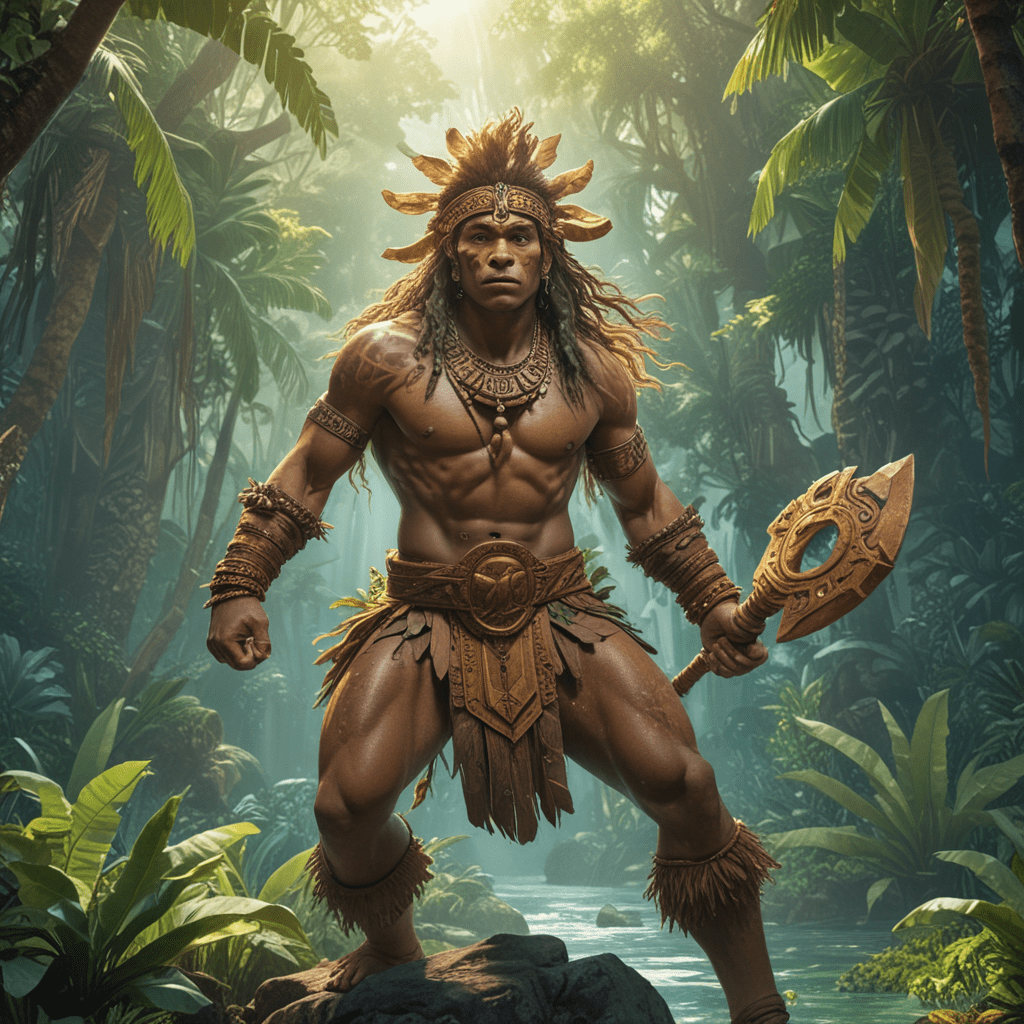Polynesian Mythology: Tales of Adventure
Polynesian mythology, a captivating tapestry of tales and legends, has captivated generations with its epic adventures and profound wisdom. Originating from the diverse Polynesian islands scattered across the vast Pacific Ocean, this mythology has played a pivotal role in shaping the cultural identity and beliefs of its people. Storytelling, an integral part of Polynesian culture, has served as a vessel for passing down knowledge, preserving history, and entertaining communities.
II. The Creation Myth
At the heart of Polynesian mythology lies the creation myth, an intricate narrative that explains the origins of the universe, the islands, and the gods. According to this myth, the world emerged from the primordial void, Po, through the creative power of the gods. The most prominent among them was Tangaroa, the god of the sea, who gave birth to the islands and other deities. The genealogy of the gods, with its complex relationships and rivalries, forms an essential part of this creation story, providing insights into the cosmic order and the nature of the divine.
III. The Adventures of Māui
Among the most celebrated heroes of Polynesian mythology is Māui, a demigod known for his extraordinary strength and cunning. His adventures, filled with humor and daring, have become legendary tales. From fishing up islands with his magical hook to capturing the sun and slowing its journey across the sky, Māui's feats have left an indelible mark on Polynesian culture. His exploits embody the Polynesian spirit of exploration, innovation, and the triumph of wit over adversity.
IV. The Legend of Hina
Hina, the moon goddess, is a central figure in Polynesian mythology. Her legend tells of her journey to retrieve her stolen children, taken by the evil goddess Miru. Guided by her love and determination, Hina embarked on a perilous quest, facing treacherous seas and overcoming formidable obstacles. The story of Hina not only showcases Polynesian resilience but also highlights the importance of family and the power of maternal love. Through her celestial connections, Hina also symbolizes the cycles of life, death, and rebirth.
V. The Voyage of Sina
The Voyage of Sina is an epic tale of love, adventure, and resilience. Sina, a fearless navigator, sets sail in search of her lost husband, guided by the stars and her unwavering determination. Along her perilous journey, she encounters numerous challenges, including a giant octopus that threatens to derail her quest. Sina's story embodies the Polynesian spirit of exploration and the strength of women in Polynesian society. Her voyage serves as a testament to the courage and resourcefulness of those who dare to navigate the unknown.
VI. The Battle of Ku and Lono
The Battle of Ku and Lono is a pivotal conflict in Polynesian mythology, representing the clash between the forces of war and fertility. Ku, the god of war, challenged Lono, the god of peace and agriculture, to a fierce battle that threatened to tear apart the world. The outcome of this epic struggle shaped the balance between conflict and harmony in Polynesian society.
VII. The Story of Pele
Pele, the goddess of volcanoes and fire, occupies a prominent place in Polynesian mythology. Her legend tells of her fiery creation of the Hawaiian Islands and her role as a destructive yet benevolent force. Pele's story mirrors the Polynesian reverence for nature and its powerful elements. Through her passionate and tempestuous nature, she represents both the beauty and the danger that coexist within the natural world.
VIII. The Legends of the Kumulipo
The Kumulipo is a sacred chant that encompasses the genealogy of the Hawaiian people. It traces their lineage back to the primordial void and narrates the creation of the islands and their inhabitants. The Kumulipo serves as a living record of Hawaiian history and culture, providing a deep connection between the present and the past. Through its poetic verses, the Kumulipo imparts knowledge about the origins and traditions of the Hawaiian people.
IX. The Influence of Polynesian Mythology
Polynesian mythology has had a profound influence on the art, music, and dance of the Pacific islands. The epic tales and legends have inspired countless works of art, from intricate carvings and sculptures to enchanting dances and traditional songs. Polynesian mythology has also played a significant role in transmitting knowledge and cultural values from generation to generation, shaping the beliefs and practices of Pacific island communities.
X. Conclusion
Polynesian mythology, with its captivating adventures, profound wisdom, and rich symbolism, continues to resonate with people worldwide. As a source of inspiration for art, literature, and music, it celebrates the Polynesian spirit of exploration, creativity, and resilience. Its relevance extends beyond its cultural origins, offering insights into human nature, the power of storytelling, and the interconnectedness of all things.
FAQs
1. What are some of the most famous Polynesian myths and legends?
- The Creation Myth
- The Adventures of Māui
- The Legend of Hina
- The Voyage of Sina
- The Battle of Ku and Lono
2. Who is the most important god in Polynesian mythology?
Tangaroa, the god of the sea, is considered the most important god in Polynesian mythology. He is the creator of the islands and the father of many other gods.
3. What is the significance of storytelling in Polynesian culture?
Storytelling is central to Polynesian culture. It serves as a means of preserving history, transmitting knowledge, and entertaining communities.

